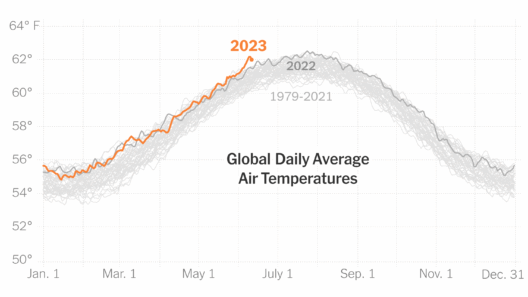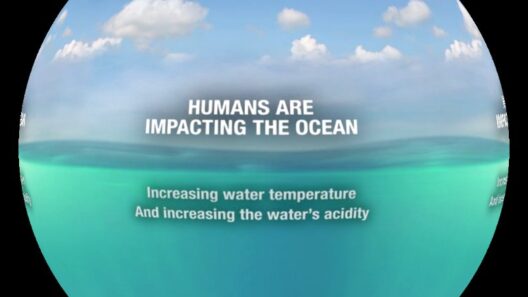Global warming represents one of the most pressing challenges of our time. As climate change continues to accelerate, it becomes imperative to explore a spectrum of solutions, including those emerging from conservative ideologies. Can right-wing solutions effectively combat global warming? Here, we will dissect the potential and challenges of a conservative approach to environmental policy.
Firstly, a core tenet of many conservative strategies is the concept of market-based solutions. This premise posits that economic incentives can drive innovation and efficiency. One such instrument is a carbon tax, which levies a fee on fossil fuel emissions. Proponents argue that a well-designed carbon tax can lower greenhouse gas emissions effectively while providing a revenue stream for renewable energy investments. The rationale is straightforward: by making carbon emissions an economic liability, businesses will be motivated to adopt cleaner technologies and practices.
Alongside taxation, cap-and-trade systems represent another market-driven approach. In such frameworks, the government sets a limit on emissions and issues allowances that can be bought and sold. This not only incentivizes reductions in emissions but also fosters a trading market, allowing businesses to buy cheaper allowances rather than invest in costly technologies upfront. Critics may argue that these systems can become convoluted and susceptible to market manipulation, yet the fundamental concept remains a foundational conservative solution to climate change.
Conservatives often emphasize the importance of energy independence and national security, which can serve as compelling arguments for investing in renewable energy sources. By reducing reliance on foreign oil, the United States can bolster its energy sovereignty and simultaneously labor toward climate mitigation. Wind, solar, and hydroelectric power not only generate electricity with minimal carbon emissions but also create jobs locally, thus marrying economic and environmental goals. The shift toward renewables could therefore be framed as a patriotic duty to protect both the economy and the environment.
The role of technological innovation cannot be overstated in a conservative framework against climate change. The promotion of research and development (R&D) in clean technologies is essential. Through supporting new technologies such as carbon capture and storage (CCS) and breakthroughs in battery storage, conservatives can advocate for innovation rather than regulation as the means to achieve emissions reductions. By investing in research, the private sector can carry the burden of implementing these technologies, thereby instilling an entrepreneurial spirit in the fight against global warming.
Moreover, the conservative emphasis on personal responsibility aligns well with environmental stewardship. By encouraging individual actions, such as reducing energy consumption or adopting sustainable practices, conservatives can foster a grassroots mindset toward combating climate change. Citizens could be nudged to embrace sustainability through community initiatives, education, and incentives to adopt eco-friendly practices in their daily lives. This not only complements broader legislative efforts but also creates a culture of environmental consciousness.
Contrarily, a conservative approach to climate change is not devoid of challenges. Resistance to acknowledging the scientific consensus around climate change remains a significant barrier. Many conservatives still question the anthropogenic contributions to climate change, leading to hesitance in endorsing climate action. This skepticism can stifle the progress necessary for comprehensive policy frameworks and may lead to insufficient measures that fail to tackle the urgency of the crisis.
Furthermore, large-scale fossil fuel industries often exert considerable influence over conservative policymakers, creating conflicts of interest. The intertwining of profits from fossil fuels with political power can lead to a reluctance to implement measures that would threaten these industries. Such dependencies can inhibit the adoption of cleaner energy solutions and prolong the reliance on carbon-intensive resources. These elements highlight the tension between conservative ideals of free enterprise and the imperative for environmental accountability.
Isolationist tendencies within conservative thought may also pose obstacles to international cooperation, which is crucial for addressing a global problem like climate change. The effectiveness of any national plan is contingent on parallel efforts by other nations. A lack of engagement on the global stage risks undermining domestic efforts. This isolation can result in missed opportunities for collaboration on shared technology, funding, and strategies that transcend borders.
Lastly, the perception that climate action might result in economic downturns complicates the message of conservative climate advocates. An effective conservative plan must convincingly communicate the economic benefits of transitioning away from fossil fuels. It is essential to highlight the potential job creation within renewable sectors, along with the long-term savings associated with energy efficiency. To garner widespread support, conservative solutions must be framed not only as environmentally necessary but also as economically advantageous.
In conclusion, while a conservative plan to combat global warming may face considerable hurdles, it is far from implausible. Market-driven solutions such as carbon pricing, innovation in clean technologies, and a strong narrative of individual responsibility provide a foundation on which right-wing strategies can be built. However, overcoming skepticism towards climate science, industry influence, and international ambivalence is critical for these solutions to achieve their full potential. As the climate clock ticks ever more rapidly, the collaboration between diverse ideological perspectives may yield the most effective path forward in the fight against global warming.







